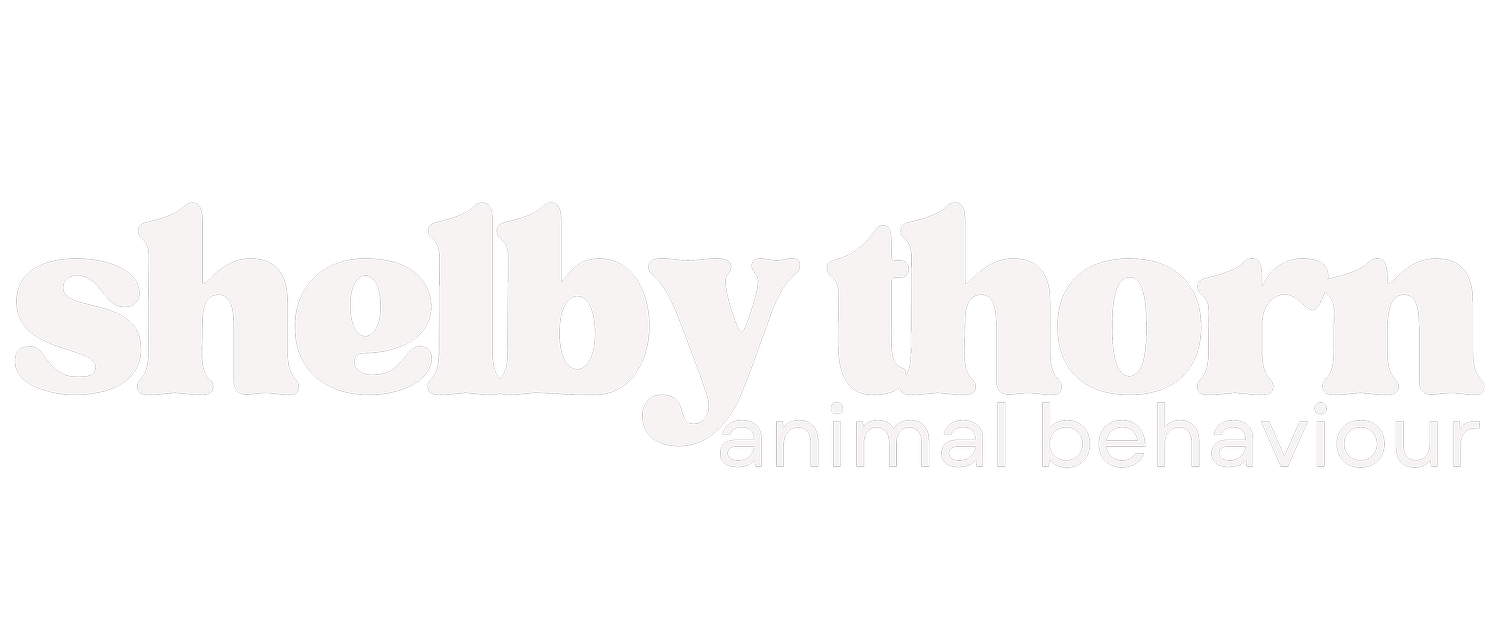A Pawsitive Shift: Reinforcing Alternate Behaviours
When it comes to animal behaviour modification, one of the most effective strategies is reinforcing alternate behaviour. But what exactly does this mean, and why is it such a crucial part of the process?
What is Reinforcement of Alternate Behaviour?
Reinforcement of alternate behaviour involves encouraging an animal to engage in a different, more desirable behaviour rather than reinforcing or tolerating an undesirable one. In simpler terms, we’re not trying to eliminate unwanted behaviour through punishment or force; instead, we focus on giving the dog something else to do that is more in line with what we want. This technique is rooted in the principles of operant conditioning, where behaviours are influenced by the consequences that follow them. In this context, positive reinforcement is used to strengthen new, ‘acceptable’ behaviours—thus gradually reducing the likelihood of the undesirable behaviours we’re aiming to modify.
The Science: Practice Strengthens Behaviour
All beings tend to repeat behaviours that are rewarded in some way. This is the foundation of reinforcement training. When a behaviour is followed by a positive outcome (such as a treat, praise, or play, or even distance reduction or a desired difference in the environment), the animal is more likely to repeat that behaviour in the future. This is why consistent practice of desired behaviours is essential. The more frequently a pet is rewarded for performing a specific behaviour, the stronger that behaviour becomes. This is known as “behavioural reinforcement.” For example, if your dog is jumping up on people when they enter your home and you reinforce sitting calmly instead, the act of sitting will be repeated as it is positively reinforced. Over time, the jumping behaviour is less likely to occur because it isn’t being rewarded, and sitting becomes the default behaviour.
Fostering New Behaviours
Now, here’s where it gets a bit more sophisticated. To successfully modify an animal’s behaviour, we must create an opportunity for them to practice something else—something more appropriate. This is often referred to as behavioural substitution, a process where one behaviour is replaced by another. When we ask for alternate behaviours, we’re not merely “telling” the dog what not to do. Rather, we provide them with a new response to a given situation. This process allows the dog to practice behaviours that are more in alignment with the expectations we have, and these behaviours, once practiced and reinforced, become the more dominant behaviours. Over time, these new behaviours can replace the undesirable ones as the dog becomes more familiar and comfortable with the alternatives. For instance, a dog that lunges at the door when someone arrives can be taught to lie down on a mat or sit quietly when the doorbell rings. By reinforcing this calmer alternative (lying down or sitting) consistently, we encourage the dog to practice these responses. As the dog practices these behaviours, they become more ingrained, eventually leading to a more reliably calm response to door greetings.
Why is this important?
Reinforcing alternate behaviours rather than focusing solely on stopping undesirable ones is far more effective in the long term. There are a few key reasons for this:
It Encourages Positive Behaviour
Reinforcing positive alternatives gives the animal something constructive to do, which reduces frustration and confusion. It’s a clear, actionable way forward.
It Reduces Stress
Focusing on what the dog ‘should’ be doing rather than what they shouldn’t be doing helps to avoid negative reinforcement, which can create stress or fear, causing more problematic behavioural responses to present. When an animal is guided towards a desirable behaviour, they are more likely to enjoy the process of learning.
It Builds a Stronger Bond
Using reinforcement to teach and encourage alternative behaviours fosters trust and cooperation between you and your dog. They come to understand that good things happen when they do the right thing, and your relationship isn’t compromised because of punishment techniques.
It’s Sustainable
The more a dog practices a behaviour and is reinforced for it, the stronger it becomes. This creates lasting changes, and the modified behaviour becomes a permanent part of the dog’s repertoire.
Practicalities
When using reinforcement of alternate behaviour in training, consistency is key. The dog must have plenty of opportunities to practice the new behaviour in various contexts and situations. For example, if you're working on keeping your dog from jumping up on guests, you might want to practice in different environments, with different people, and under varying levels of distraction. In these situations, you’d continue to reinforce calm, alternative behaviours—like sitting or staying on a mat—and ensure that the unwanted behaviour of jumping doesn’t receive reinforcement. It’s also important to note that there will be times when a dog will accidentally perform the undesirable behaviour. In these instances, don’t give up or resort to punishment. Simply redirect the dog to the desired behaviour and reward them when they perform it. With enough repetition and consistency, the new, reinforced behaviours will replace the old ones.
The reinforcement of alternate behaviour is a foundational strategy in positive animal training. Rather than focusing solely on discouraging undesirable behaviours, this approach empowers both the dog and the owner to actively engage in creating more appropriate responses. By consistently reinforcing desirable behaviours, we can shape and strengthen the dog’s actions, leading to lasting behavioural change that enhances the relationship between dog and handler. Incorporating the reinforcement of alternate behaviours into your training routine provides a clear, compassionate, and effective path to modifying problem behaviours, giving your dog the tools to succeed in every situation.

